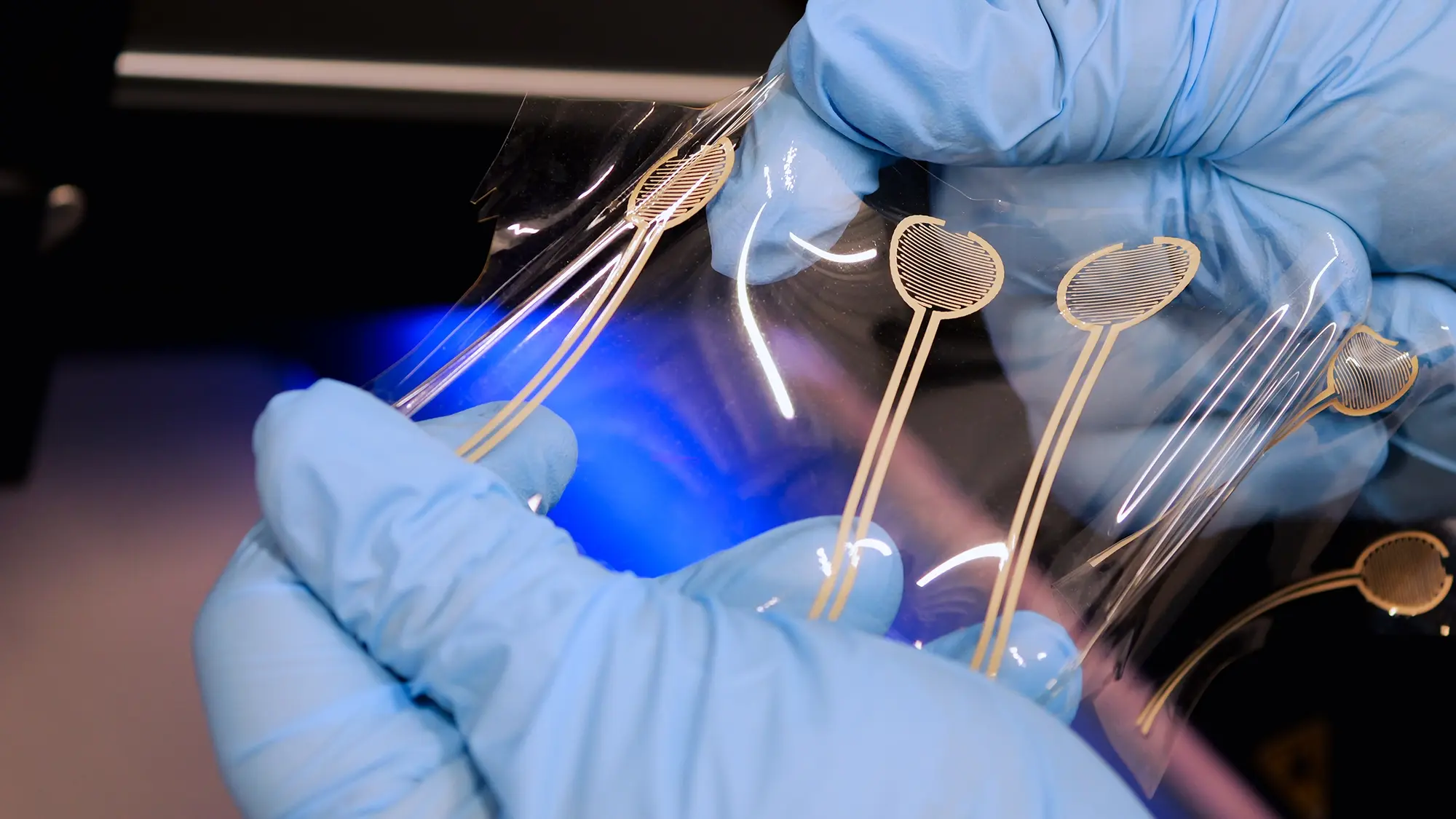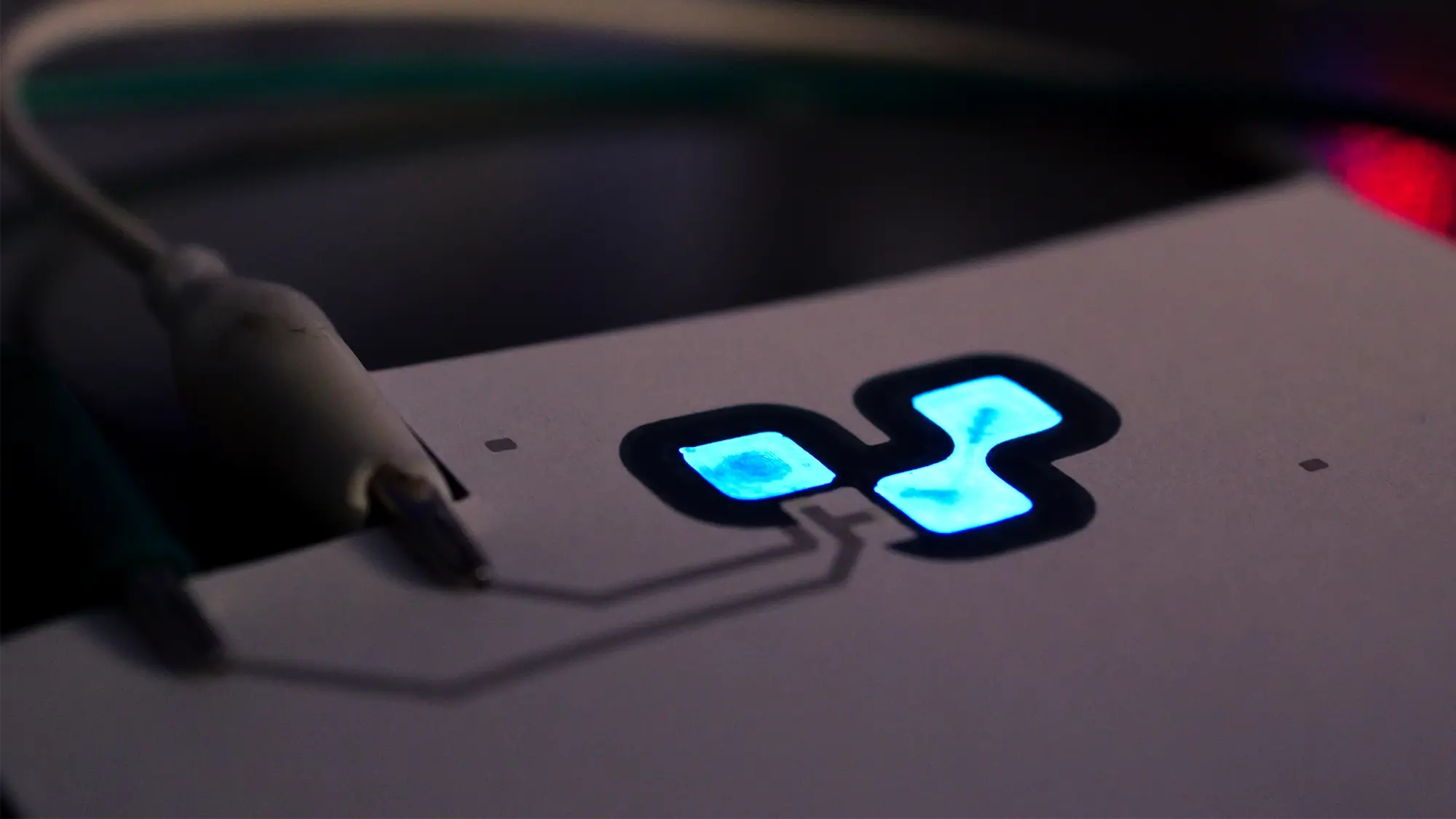Next generation electronics with Voltera
INDUSTRY
Academia, Healthcare, Sensors, Smart Textiles, Sustainability, Wearables
APPLICATION
Additive PCB Prototyping, Bioelectronics
PRODUCT
V-One
Highlights
The Bao Group is a team of chemical engineers, chemists, material scientists, physicists, and electrical engineers working towards the goal of developing flexible and stretchable materials, electronics, and energy devices.
Their groundbreaking research ranges from smart bandages and self-healing electronic skin to flameproofing lithium-ion batteries, and stretchable and implantable brain probes.
V-One and the invention of robot skin
With a V-One PCB printer in their lab, researchers in the Bao Group are designing novel solutions to everyday problems. In particular, they are developing robotic skin (also called e-skin), which is in the category of flexible, stretchable, and self-healing electronics. It is capable of generating nerve-like impulses that mimic human skin and talk to the brain.
“Robotic skin should have a lot of sensors to mimic our skin's function, like pressure sensors, strain sensors, temperature sensors, and torsional sensors. I have to interconnect all of those sensors to rigid electronics.”- Dr. Jaemin Kim, Postdoctoral Researcher, Bao Research Group at Stanford University


The next generation of wearable devices will be different from the rigid devices of the past. Stretchable sensors will change the way we track biological signals and provide continuous and precise healthcare monitoring, even when a doctor is not present. This kind of research requires the ability to test materials, make changes to designs, and prototype unconventional form factors quickly and easily. Using Voltera’s dispensing platforms means that researchers can prototype several designs per day.
“We have to change the design based on the experiment, so previously we have used a screen-printing mask, but the feedback is very slow. With the V-One we can print improvements very quickly.”- Dr. Naoji Matsuhisa, Postdoctoral Researcher, Bao Research Group at Stanford University
The next generation of electronics
According to The Stanford Daily, “The Bao Group’s electronic skin has evolved over the past 19 years from sensing hand grasping, blood pressure, neurochemicals, and brain waves, and is now also self-healing and biodegradable.”
The Bao Group at Stanford University is revolutionizing the way the world thinks about and uses electronics, and with a V-One in their lab, they are making notable progress — one research project at a time.
Additional resources
- Stanford University: The Bao Group
- Research article: Neuromorphic sensorimotor loop embodied by monolithically integrated, low-voltage, soft e-skin
- Google Scholar: Zhenan Bao
- LinkedIn: Zhenan Bao
- LinkedIn: Naoji Matsuhisa
- LinkedIn: Jaemin Kim

Want to learn more about our printers?
Learn how a Voltera dispensing system can help you prototype faster, waste less material, and protect your intellectual property.

